3.1 General history of lighthouses in Australia
The first lighthouse to be constructed on Australian soil was Macquarie Lighthouse, located at the entrance to Port Jackson, NSW. First lit in 1818, the cost of the lighthouse was recovered through the introduction of a levy on shipping. This was instigated by Governor Lachlan Macquarie, who ordered and named the light.
The following century oversaw the construction of hundreds of lighthouses around the country. Constructing and maintaining a lighthouse were costly ventures that often required the financial support of multiple colonies. However, they were deemed necessary aids in assisting the safety of mariners at sea. Lighthouses were firstly managed by the colony they lay within, with each colony developing their own style of lighthouse and operational system. Following Federation in 1901, which saw the various colonies unite under one Commonwealth government, lighthouse management was transferred from state hands to the Commonwealth Lighthouse Service.
Lamps and optics: an overview
Lighthouse technology has altered drastically over the centuries. Eighteenth century lighthouses were lit using parabolic mirrors and oil lamps. Documentation of early examples of parabolic mirrors in the United Kingdom, circa 1760, were documented as consisting of wood and lined with pieces of looking glass or plates of tin. As described by Searle, “When light hits a shiny surface, it is reflected at an angle equal to that at which it hit. With a light source is placed in the focal point of a parabolic reflector, the light rays are reflected parallel to one another, producing a concentrated beam”.8
In 1822, Augustin Fresnel invented the dioptric glass lens. By crafting concentric annular rings with a convex lens, Fresnel had discovered a method of reducing the amount of light absorbed by a lens. The Dioptric System was adopted quickly with Cordouran Lighthouse (France), which was fitted with the first dioptric lens in 1823. The majority of heritage-listed lighthouses in Australia house dioptric lenses made by others such as Chance Brothers (United Kingdom), Henry-LePaute (France), Barbier, Bernard & Turenne (BBT, France) and Svenska Aktiebolaget Gasaccumulator (AGA of Sweden). These lenses were made in a range of standard sizes, called orders—see ‘Appendix 2. Glossary of lighthouse Terms relevant to North Reef Lighthouse’.
Early Australian lighthouses were originally fuelled by whale oil and burned in Argand lamps, and multiple wicks were required in order to create a large flame that could be observed from sea. By the 1850s, whale oil had been replaced by colza oil, which was in turn replaced by kerosene, a mineral oil.
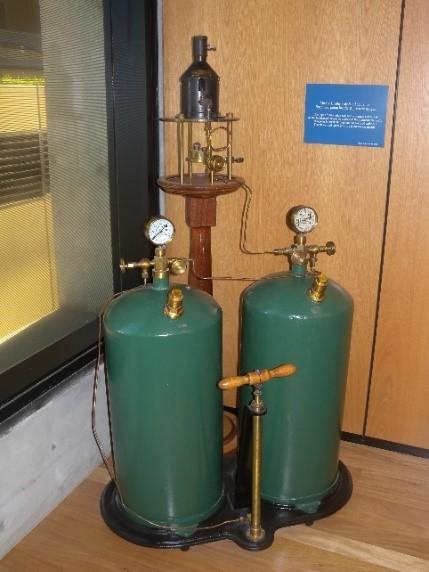 Figure 9. Incandescent oil vapour lamp by Chance Brothers (Source: AMSA)
Figure 9. Incandescent oil vapour lamp by Chance Brothers (Source: AMSA)
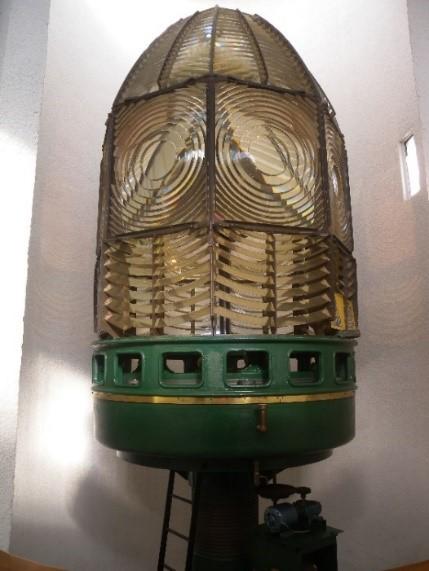 Figure 10. Dioptric lens on display at Narooma (Source: AMSA)
Figure 10. Dioptric lens on display at Narooma (Source: AMSA)
In 1900, incandescent burners were introduced. This saw the burning of fuel inside an incandescent mantle which produced a brighter light with less fuel within a smaller volume. Light keepers were required to maintain pressure to the burner by manually pumping a handle as can be seen in Figure 9.
In 1912, Swedish engineer Gustaf Dalén, was awarded the Nobel Prize in physics for a series of inventions relating to acetylene-powered navigation lights. Dalén’s system included the sun valve, the mixer, the flasher, and the cylinder containing compressed acetylene. Due to their efficiency and reliability, Dalén’s inventions led to the gradual destaffing of lighthouses. Acetylene was quickly adopted by the Commonwealth Lighthouse Service from 1915 onwards.
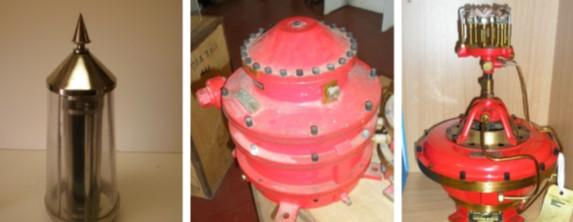
Large dioptric lenses, such as that shown in Figure 10, gradually decreased in popularity due to cost and the move towards unmanned automatic lighthouses. By the early 1900s, Australia had stopped ordering these lenses with the last installed at Eclipse Island in Western Australia in 1927. Smaller Fresnel lenses continued to be produced and installed until the 1970s when plastic lanterns, still utilising Fresnel’s technology, were favoured instead. Acetylene remained in use until it was finally phased out in the 1990s.
In the current day, Australian lighthouses are lit and extinguished automatically using mains power, diesel generators, and solar-voltaic systems.
3.2 The Commonwealth Lighthouse Service
When the Australian colonies federated in 1901, they decided that the new Commonwealth government would be responsible for coastal lighthouses—that is, major lights used by vessels travelling from port to port—but not the minor lights used for navigation within harbours and rivers. There was a delay before this new arrangement came into effect. Existing lights continued to be operated by the states.
Since 1915, various Commonwealth departments have managed lighthouses. AMSA, established under the Australian Maritime Safety Authority Act 1990 (Cth), is now responsible for operating Commonwealth lighthouses and other aids to navigation, along with its other functions.
3.3 North Reef: a history
Aboriginal history
Further consultation with Traditional Stakeholders is required.
Early European history
On 11 June 1770, English explorer Captain James Cook ran his ship the Endeavour aground on a reef. Cook and his crew had travelled from England in search of a southern continent and were just under two years into their voyage when they ran into trouble just north of what Cook would later name Cape Tribulation. The Endeavour and its crew was stuck for roughly a day and freed only by dumping a large amount of cargo overboard. This incident, perhaps frustrating to Cook, was significant as it was the first time a European directly encountered one of the world’s largest underwater ecosystems – the Great Barrier Reef.9
Although very little observation of the Reef was carried out during Cook’s voyage, the European scientific communities were now aware of the vastness of the Reef. The name ‘Great Barrier Reef’ was devised by English explorer Matthew Flinders during his 1802 voyage aboard the Investigator, a voyage that also saw Flinders’ ship become wrecked on Wreck Reef.10 Various shipwrecks have occurred on the Reef including the Yongala (1911) which was wrecked during a cyclone near Cape Bowling Green and claimed the lives of 122 passengers.11
North Reef was left relatively undisturbed by human interaction until the construction of the lighthouse in 1878.
3.4 Why North Reef?
In 1873, the marine departments of the various Australian colonies assembled in Sydney for discussions on the current placement of lighthouses along the country’s coastline. Regarding Queensland, it was discussed that two lighthouses be built at Booby Island and North Reef. This was due to a recent surge of shipping from Asian ports which had revealed the risks that came with attempting to navigate the stretch of coast to Brisbane. North Reef sat at the southwest edge of the Capricorn Channel, a stretch of water that ran along the coast near Gladstone. It was argued that placing a light in this vicinity would alert ships to nearby shoals and coral reefs.12
3.5 Building a lighthouse
Design and construction
On 7 July 1875, the Colonial Architect for Queensland, F. D. G. Stanley, visited the proposed site alongside foreman of works Robert Ferguson.13 Stanley described that ‘…the reef consists of coral rock covered by about 6 feet of water at high tides and having in centre a bank of sand about 600 ft in length by 40 feet in width.’14 On 28 October 1875, Stanley submitted plans for the design of the lighthouse.15 The tower was to replicate earlier timber-framed lighthouses, such as Lady Elliot Island Lighthouse, on a larger-scale. With a site that was predominately under water at high tide, Stanley proposed the following in his memo:
‘It is proposed to erect the tower as a centre, the dwellings for lightkeepers being arranged round the base of the same. The foundation for the whole structure will be in cement concrete contained within a cast iron cylinder 40 feet in diameter carried down 15 feet through the sand bank to the cap of the coral reef and 2 feet into same. In order to provide storage for water and also to economise the quantity of concrete required it is proposed to form circular tanks below floor level as shown in section. These can be supplied from water shed from sides of tower and roof of Quarters, no fresh water is, of course, obtainable on the site.
It is suggested that the building be constructed in the first place either at Rockhampton, Maryborough or Brisbane, a contract being taken to include this portion of the work and the erection on the site and that freight of material from either of the above places to the reef be provided by Government.’16
Stanley’s circular room design for the base of the tower was entirely unique for an Australian lighthouse, and offered a resolution for the impracticality of establishing a place of residence on a sand bank.
It was decided a 2nd Order rotating dioptric light be ordered for the light.
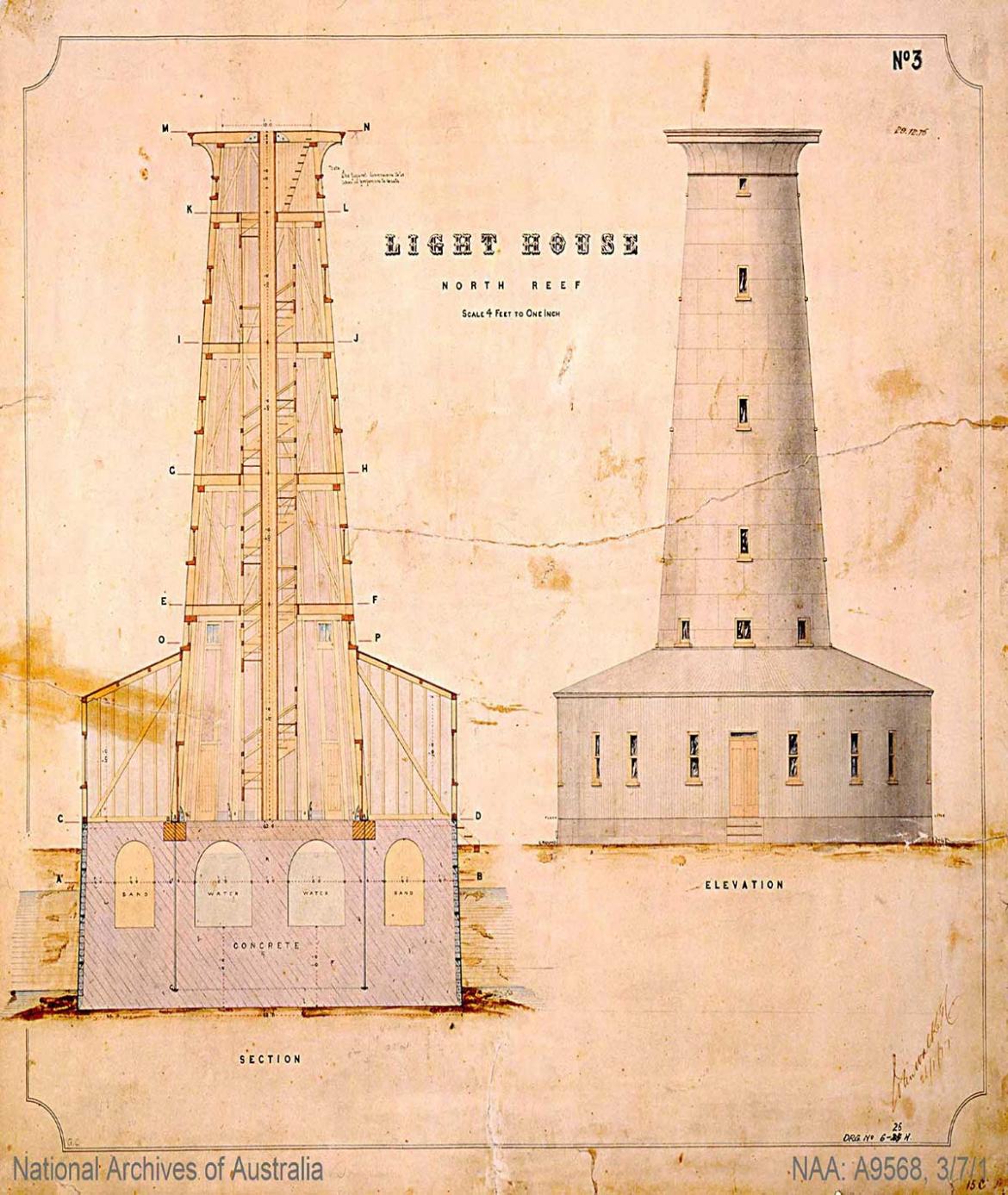 Figure 12. Blueprint design of North Reef Lighthouse. Courtesy of the National Archives of Australia. NAA: A9568, 3/7/1(© Commonwealth of Australia, National Archives of Australia)17
Figure 12. Blueprint design of North Reef Lighthouse. Courtesy of the National Archives of Australia. NAA: A9568, 3/7/1(© Commonwealth of Australia, National Archives of Australia)17
Tenders were called in January 1876 by the Department of Public Works, and several offers were received including what was considered a low tender of £13,793 from John Walker & Co. of Maryborough, Queensland. Unfortunately, records show that the call for tenders was withdrawn by the Executive Council on 28 March 1876. Walker & Co. subsequently contacted the Council in April detailing that they were willing and able to progress with the works – it is understood they had purchased a schooner that would allow transport of materials to site. Eventually, their second tender was accepted on 2 December 1876. Construction was complete by 1878, and North Reef Lighthouse was lit for the first time on 14 November 1878.18
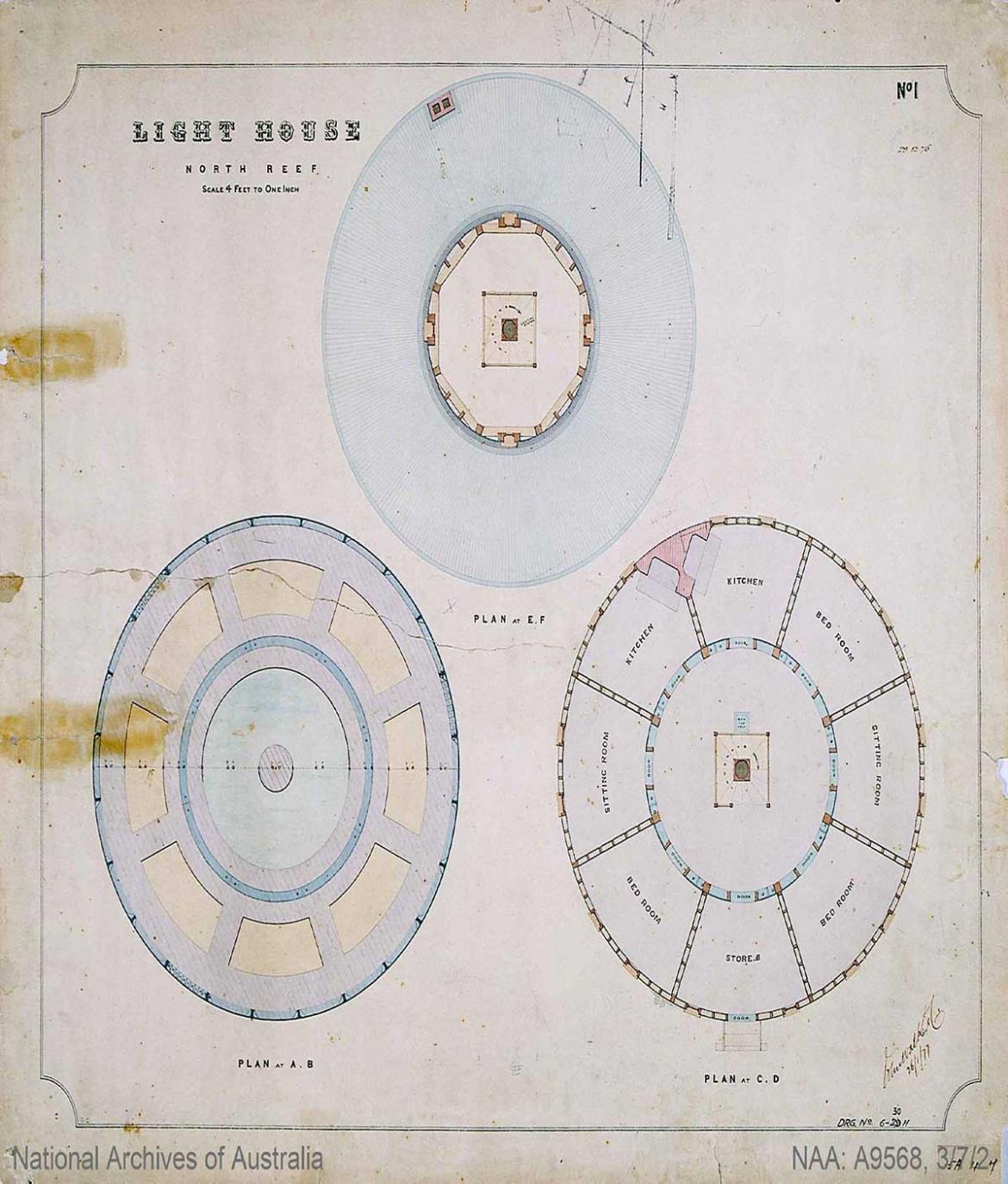 Figure 13. Blueprint design of North Reef ground floor. Courtesy of the National Archives of Australia. NAA: A9568, 3/7/2. (© Commonwealth of Australia, National Archives of Australia))19
Figure 13. Blueprint design of North Reef ground floor. Courtesy of the National Archives of Australia. NAA: A9568, 3/7/2. (© Commonwealth of Australia, National Archives of Australia))19
Equipment when built
Following construction, the lighthouse stood as a 15 metre tall, timber-framed tower atop a hollow concrete base encircled by an iron caisson. The following ‘Notice to Mariners’ was published in November 1878:
‘On and after this date, a Fixed and Flashing Light will be exhibited from the Lighthouse recently erected on North Reef. The Tower, which is circular, is painted white, and is 80 feet in height. The illuminating apparatus is dioptric, of the second order, showing two flashes in succession, at an interval of one minute, followed by two minutes of fixed light, the series of changes occupying four minutes. The light, which shows all round the horizon, is 72 feet above high water, and is visible from the deck of a small craft about 13 miles.’20
3.6 Light keeping
North Reef Lighthouse was originally staffed by three lightkeepers – a superintendent, and a first and second assistant. Lightkeeping at this particular lighthouse was no easy feat due to the complete isolation experienced, as well as the cramped living space. From the get-go, bachelors were considered the ideal employee to be stationed at North Reef as the sheer lack of living space did not permit wives and children to reside there also.21
The keepers, completely surrounded by open water, were at the mercy of the supply ships that were due to complete regular trips to the lighthouse with food and fresh water. However many accounts of the time detail that supply ships were sometimes few and far between. In 1921, the Lyola arrived at the lighthouse with timber and ‘domestic supplies’, only to find the keepers had been ‘practically starving for a week, their only food having been turtle eggs and a little cornflour.’ The Kyogle Examiner newspaper continued with the following:
‘It was found that nine weeks had elapsed since the last Government steamer has been to the island with provisions and wood, and had it not been for the rationing of what little they did have the occupants of this lonely isle would have been in a very sorry plight. Only three calls had been made by the Government steamer within the last seven months.’22
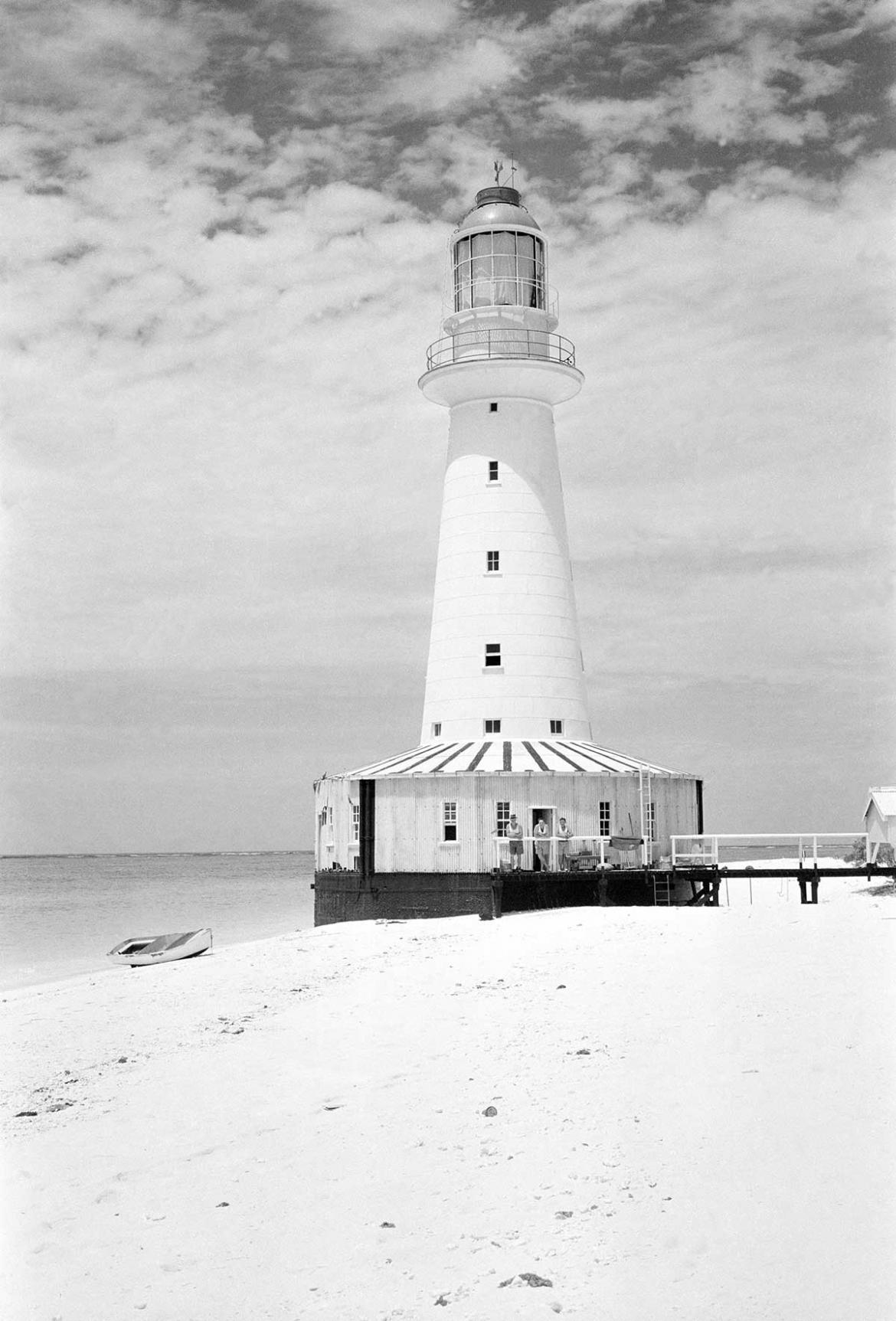 Figure 14. North Reef Lighthouse, 1949. Courtesy of the National Archives of Australia. NAA: A1200, L11611. (© Commonwealth of Australia, National Archives of Australia)24
Figure 14. North Reef Lighthouse, 1949. Courtesy of the National Archives of Australia. NAA: A1200, L11611. (© Commonwealth of Australia, National Archives of Australia)24
The Queensland Government was heavily criticised for what was perceived by the general public as a complete lack of care for the keepers. North Reef keepers were reportedly only permitted one month of leave per year. This, combined with the lack of food and isolation led publications to refer to the keepers as ‘inmates’.23
The isolation and lack of communication was exemplified in May 1932 when the steamer Saros passed the lighthouse and received a Morse signal from the keepers. One of the keepers, Mr William Cleaver, required immediate medical assistance and the Saros passed along the message to the Deputy Director of Navigation and Lighthouses, Captain N. G. Roskruge, who organised for a launch to deliver Mr Cleaver from the lighthouse to Gladstone.25 Leaving the lighthouse in a hurry, even in moments of emergency, was in no way possible.
Lightkeepers remained stationed at North Reef Lighthouse until 1978 following the light’s conversion to electric operation – exactly 100 years from when the light was first lit.
3.7 Chronology of major events
The following table details the major events to have occurred at North Reef Lighthouse.
| Date | Event |
| 1886 | North Reef light extinguished from 2 am after the keeper watching the light left their post to rescue their fellow keepers. The lighthouse boat and an accompanying boat had capsized in the surf and all seven men were near drowned. No fatalities.26 |
| 1913 | Boat dispatched from the Government’s steamer the Excelsior capsizes while carrying stores and mail to North Reef Lighthouse. Men rescued, no fatalities.27 |
| 1921 | The Lyola arrives at the lighthouse with supplies to find starved keepers who had survived by extreme rationing.28 |
| 1926 | The steamship Cooma runs aground on North Reef, no fatalities.29 |
| 18 May 1932 | An urgent call for help was received by the steamer Saros from North Reef Lighthouse. Keeper William Cleaver required medical attention and was taken by launch to Gladstone.30 |
| 1951 | Keeper J. Mitchell taken by launch to Gladstone after radio calls were made over the lighthouse’s transmitter for medical assistance.31 |
| 1978 | Lighthouse destaffed. |
| 08 July 1980 | Lighthouse listed on Register of the National Estate. |
| 22 June 2004 | Lighthouse listed on Commonwealth Heritage List. |
3.8 Changes and conservation over time
The following section details the changes and conservation efforts to have been carried out at North Reef Lighthouse since its construction.
The Brewis Report
Commander CRW Brewis, retired naval surveyor, was commissioned in 1911 by the Commonwealth Government to report on the condition of existing lights and to recommend any additional ones. Brewis visited every lighthouse in Australia between June and December 1912, and produced a series of reports published in their final form in March 1913. These reports were the basis for future decisions made for each of the individual lighthouses and provide a snapshot of the lightstation in the early 20th century.
Brewis recommended that North Reef be provided with an incandescent mantle installed to increase intensity of the light. It was also recommended that an acetylene Morse lamp be provided for the keepers due to their isolated situation.32
North Reef Light. (102 miles from High Peak; 70 miles from Lady Elliot Island.) Lat. 23° 11’ S., Long. 151° 56’ E., Chart No. 345. Established in the year 1878. Character. – One white, fixed. Group flashing every four minutes. Dioptric, 2nd Order. Illuminant, kerosene. Candle-power, 20,000. Condition, &c. – Light-house, tower and apparatus are in a fair state of preservation, but the base of the tower will require strengthening in the course of a few years. Some minor repairs are required. An acetylene Morse lamp is necessary to facilitate communication with passing vessels in case of an emergency. The light-keepers’ quarters are situated in the tower. There are three light-keepers at the station. RECOMMENDED. –
|
Alteration to the light
The following table details the changes to the North Reef light since its exhibition in 1878.
| Date | Alteration |
| 1927-1929 | Chance Bros. lantern house replaces original lantern house. 2nd order lens with four directional panels and four dioptric mirror panels installed. Mercury bath installed to improve lens rotation. Incandescent Burner installed. Fixed and group flashing white light replaced by group flashing white light comprised of four flashes every 20 seconds. Intensity: 250,000 candelas Visibility: 14 miles Temporary light with visibility of 8 miles installed during alterations.33 |
| 1976 | Chance Bros. 1927 lens, weight-driven clock dismantled and removed from site. Mercury removed from pedestal. |
| 1977 | Converted to diesel electric operation with batteries stored in one of the ground floor rooms. |
| 1978 | Lighthouse destaffed. |
| 1987 | Converted to solar-electric operation. |
| 2005 | Vega VRB lantern installed. |
| 2020 | Vega VRB lantern replaced due to outage. |
For information on current light details, see ‘Appendix 4 North Reef Lighthouse current light details’.
Recent conservation works
The following table details the recent conservation works to have occurred at North Reef Lighthouse.
| Date | Work |
| 2011 | Major structure refurbishment project:
|
3.9 Summary of current and former uses
From its construction in 1878, North Reef Lighthouse has been used as a marine AtoN for mariners at sea. Its AtoN capability remains its primary use. The quarters, once used to house keepers stationed at the tower, are now utilised to house battery equipment for the light.
3.10 Summary of past and present community associations
Aboriginal associations
The Gidarjil Development Corporation maintain interests in North Reef Island. Further consultation is required with traditional stakeholders.
Local, national and international associations
The lighthouse maintains strong familial links due to its extensive history as a manned site. Numerous men were stationed at North Reef over the course of a century, and their experiences residing in the middle of a coral reef were captured by contemporary sources.
The lighthouse, located within the Great Barrier Reef, maintains associations with both national and international environmental communities, and world heritage organisations.
3.11 Unresolved questions or historical conflicts
Any unresolved questions or historical conflicts brought to light will be addressed in this section within future versions of the plan.
3.12 Recommendations for further research
Further investigation on the original construction process experienced would provide greater detail on the history of the lighthouse and its original fabric.
_________________________________________________________________________________________
Footnotes
8 Garry Searle, First Order: Australia’s Highway of Lighthouses, (SA: Seaside Lights, 2013), 34.
9 James Cook, Captain Cook’s Journal during his first voyage round the world: Made in H.M. Bark “Endeavour”, 1768-71: A literal transcription of the original MSS, ed. William James Lloyd Wharton (Cambridge University Press, 2014), under “Exploration of East Coast of Australia,”
10 “From Terra Australis to Australia: Matthew Flinders' journeys,” State Library New South Wales, accessed October 2020
12 J. H. Thorburn, “Major lighthouses of Queensland,” Queensland Heritage 1, no. 6 (1967): 24; “Arrival of the SS Sunfoo,” Brisbane Courier, December 13, 1873, https://trove.nla.gov.au/newspaper/article/1334368
14 Memo from the colonial architect to the undersecretary of works, 28 October 1875, Item ID 107877, Queensland State Archives.
15 Thorburn, “Major lighthouses of Queensland,” 24.
16 Thorburn, “Major lighthouses of Queensland,” 24-25.
17 NAA: A9568, 3/7/1.
18 Thornburn, “Major lighthouses of Queensland,” 25-26; Proof print of the advertisement, Item ID 107877, Queensland State Archives; “Parliamentary,’” Capricornian, December 2, 1876
19 NAA: A9568, 3/7/2.
20 Queensland Government Gazette, vol xxiii, 1878.
21 Peter Marquis-Kyle, “Queensland’s timber and iron lighthouses: 19th century colonial innovation,” (Paper presented at the 3rd Australasian Engineering Heritage Conference, 2009), 4. accessed October 2020
23 “On a lonely lighthouse isle.”; “Correspondence: North Reef and Lady Elliot Lighthouse Mails,” Morning Bulletin (Rockhampton), September 28, 1922
24 NAA: A1200, L11611.
25 “https://trove.nla.gov.au/newspaper/article/76890259, “SOS from lighthouse,” Brisbane Courier, May 20, 1932
28 “On a lonely lighthouse isle.”
29 “Cooma aground,” Evening News (Sydney), July 8, 1926, “Stranded Cooma: Passengers transhipped,” Advocate (Burnie), July 9, 1926, “SS. Cooma aground: Passengers safe,” Examiner (Launceston), July 8, 1926
30 “Lighthouse call for help.”; “SOS from lighthouse.”
32 C.R.W. Brewis, Report on the lighting of the north-east coast of Australia Torres Strait to Cape Moreton: Recommendations as to existing lights and additional lights (Department of Trade and Customs: Acting Government Printer, 1912), 25.